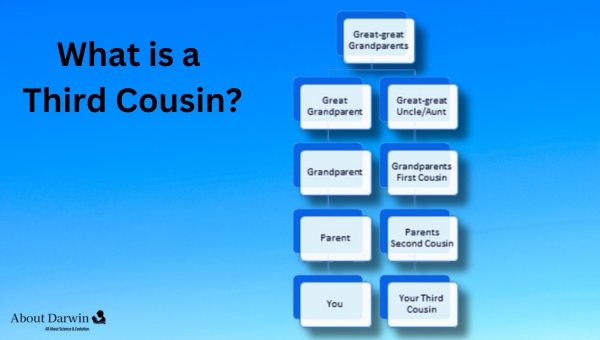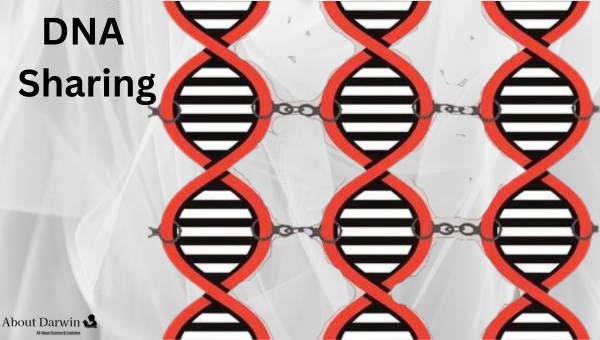Physical Address
304 North Cardinal St.
Dorchester Center, MA 02124
Imagine you’re at a family reunion, and someone introduces themselves as your third cousin. You smile and nod, but inside, you’re wondering what exactly ‘third cousin’ means. How far back do you have to trace your family tree to find the common ancestor?
Don’t worry, we’ve all been there! Understanding how different degrees of cousins work can be a little confusing.
This article will help demystify the concept for you. We’ll dive into how third cousins are related, explore if they’re considered immediate family or distant relatives, discuss the average number of third cousins one might have, and even explain complex terms like ‘third cousin once-removed’ and ‘half third cousin.’
Hold tight as we delve into this fascinating web of family relationships – who knows? You might discover an extended network waiting to embrace you!

Contents
Believe it or not, you’re related to your third cousin through your great-great-grandparents; they’re the common ancestors that you both share. This fascinating connection is part of a complex genealogical network.
Your third cousin’s roles in this grand family tapestry are more significant than you might initially think.
Diving deeper into genealogical interactions, imagine each generation as a step on a ladder leading back in time. You’d climb up two rungs to reach your grandparents and two more to meet those shared great-great-grandparents.
Now picture your third cousin – they’ve made the same journey but starting from a different family tree branch.
Your third cousin’s influences don’t stop here, though. By acknowledging this relation and nurturing familial recognition, you enrich not only your own sense of belonging but also contribute to preserving the collective memory of your lineage.
Through ancestor tracing, we can uncover stories about our forebears that otherwise would be lost in time. Your third cousin could hold key pieces to understanding who these people were and how their lives have sculpted yours today.
The connections with distant relatives like third cousins add threads that weave tighter bonds within our familial fabric – strengthening our identity and grounding us with ancestral roots.
Yes, including third cousins in your family tree is accurate because they share a common great-great-grandparent with you. This shared ancestry is what binds you together within the confines of your Family Boundaries.
Your third cousins are an integral part of your extended family, and recognizing this can open doors to deeper understanding and more meaningful Ancestry Discoveries.
Here are four reasons why acknowledging third cousins as part of your family matters:
Embracing third cousins as part of your clan underscores the interconnectedness within families. It helps broaden our definition of kinship beyond immediate circles, enriching our understanding of who we are and where we come from.
Unfolding the layers of your familial tapestry, you might be astounded by the sheer number of distant relatives populating it. Family dynamics’ complexity and labyrinthine nature can leave you wondering about the typical number of third cousins an individual may have.
Cousin calculations are a testament to both genetics understanding and ancestry exploration. You see, third cousins share great-great-grandparents, that’s five generations back. An average person could potentially have hundreds or even thousands of third cousins.
This figure, however, is subject to myriad variables: how prolific your ancestors were, cousin marriages within the lineage, migration patterns over time, and much more.
Genetic understanding also plays into this equation; you share about 0.78% DNA with your third cousins due to a common set of ancestors. As such, they represent a significant part of your genetic makeup and familial identity.
Remember though: these numbers aren’t definitive but rather an approximation based on historical data and genealogy averages. So while navigating through your family tree may seem like venturing into uncharted territory at times, every new discovery adds another vibrant thread to the intricate weave that binds you all together in shared history and heritage.
Diving into the fascinating pool of genetics, you’d be surprised to know that around 0.78% of your DNA is shared with those distant relatives we’ve been talking about, adding another intriguing piece to your genetic jigsaw puzzle!

This fact emerges from detailed DNA comparison and studies on inheritance patterns, which reveal a unique genetic similarity between you and your third cousins.
To illustrate this further:
Understanding these genealogical relationships helps clarify why the percentage of shared DNA isn’t higher. It’s because, with each new generation, the amount of DNA received from these common ancestors decreases significantly.
Unraveling such mysteries in our family lineage brings us closer together. It creates an increased sense of belonging as we discover how interconnected we all are at a cellular level. So next time when you think about your third cousins, remember, you’re more genetically linked than you might have thought!
While it might seem far-fetched, there’s a chance that you and your distant relatives on the family tree don’t share any DNA at all! This is possible due to the randomness of how genes are passed down from generation to generation.
The inherited traits you receive from your ancestors aren’t evenly distributed across your entire family tree. It’s like a genetic lottery where some traits get picked more than others.
Understanding these genetic differences can be vital when tracing your ancestry. You see, each person inherits about 50% of their DNA from each parent. But this percentage decreases significantly with every subsequent generation.
By the time you reach third cousins, the shared DNA can be less than 1%, which means there could be no DNA similarities!
This understanding highlights the complexities in our family trees and the uniqueness of our individual genetic makeup. Your distinct combination of genes sets you apart even within your own lineage.
So while third cousins do have a common ancestry tracing back to great-great-grandparents, nature may have chosen to express entirely different parts of that shared history in each descendant’s DNA profile.
You might be scratching your head over the term ‘once-removed’ in family relationships, but it’s not as complicated as you think. Bringing clarity to this terminology is all about understanding genealogy and exploring relationships within your vast family tree.
When we say ‘third cousin once removed,’ we’re delving into a specific part of your family tree dynamics. A third cousin is someone who shares a set of great-great-grandparents with you, but here’s where the ‘removing confusion’ comes in: the term ‘once-removed’ refers to a one-generation difference.
So, if you’re looking at your third cousin once removed, that person could either be the child of your third cousin, or they could be the third cousin of your parents.
That’s where terminology elucidation comes into play; it’s essential for understanding these complex relational layers. This knowledge allows you to appreciate just how interconnected our familial ties can be!
So next time, when pondering over such terms, remember this brief explanation and delve deeper into exploring relationships within your lineage. With this newfound comprehension, these intricate threads weaving through generations won’t seem quite so daunting anymore!
Nailing down what ‘half third cousin’ means might seem like a puzzling task, but it’s not as cryptic as it sounds. When we talk about half-third cousins, we’re looking at the intricacies of family lineage and relationships. It implies that you share a single great-great-grandparent with this person instead of the usual pair.
Genetic implications come into play here since sharing fewer common ancestors means less genetic overlap. This makes you genetically similar to your half-third cousin as much as to someone from your ethnic group but not directly related to you.
Inheritance rights have historical contexts tied to them. Half relations often had lesser claims or were disregarded in some cultures due to social perceptions and cultural differences. However, modern laws generally grant equal rights regardless of full or half status.
The understanding and acceptance of these complex familial relationships can vary widely across different cultures and societies. So while one society might readily acknowledge and embrace these connections, another may be less aware or accepting due to differing cultural norms.
Thus, knowing who your ‘half-third cousin’ helps identify familial ties and assists in understanding diverse cultural attitudes toward family hierarchy.
You Would Also Like To Read:
‘Cultural variations affect cousin terminology and genealogical interpretation worldwide. Your third cousin traditions may differ based on relationship perception in your culture, making this aspect of family lineage both complex and intriguing.’
Imagine unearthing a treasure trove of family connections. As third cousins, legal implications are rare, but genealogical implications abound. Adoption scenarios, blood donation eligibility, and even genetic counseling, this unique bond could influence relevance.
Yes, third cousins can marry and have children. Genetic implications are minimal at this level of kinship. Relationship dynamics, emotional connections, social perceptions, and familial traditions are crucial in such decisions.
Sure, there are fascinating celebrity cousin connections. For instance, Ralph Waldo Emerson and Henry David Thoreau were third cousins. Historical cousin relationships also include royal families, where such distant relations were common.
Inheritance disputes involving third cousins can get complex due to lineage tracking and genetic factors. Property division often relies on clear family ties, which can be tricky with distant relatives like third cousins.
So, third cousins are indeed part of your family tree. You’d share around 0.78% of your DNA with them – not a lot, but still significant!
It’s like finding a rare coin in a huge treasure chest of ancestry; you might have hundreds without even knowing it!
Even though the term ‘third cousin once-removed’ sounds complex, it simply refers to the children of your third cousins.
As for ‘half third cousin,’ it implies one common great-great-grandparent instead of two.